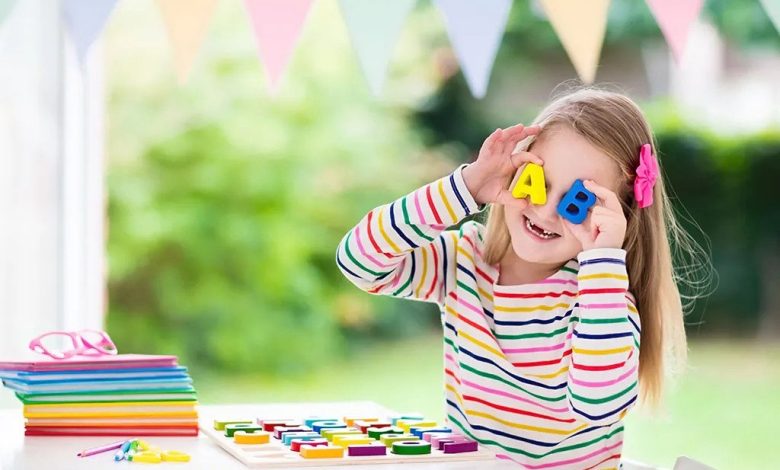Games To Learn English With Children

Let’s Play! Games To Learn English With Children
Children and adults love to play. Why? It’s simple: playing sparks interest, and winning promotes dopamine production, the hormone of happiness. The game allows you to escape from reality and the worries of everyday life. Each game has its own rules, which, if accepted and followed, will enable the brain to forget about its problems. Games require tactics and strategy, which develops attention, memory, imaginative thinking, and interactions – Learn.
For this reason, it has long been one of the most effective tools for teaching English to students of all ages. Play is a great way to teach English to children; it is one of the main activities of kindergarten classes. Through play, children learn things about themselves and the world around them.
Language in the mother tongue is developed through games. The same is true for socialization. When the child plays a game, he learns to communicate, negotiate, share, reconcile with others, etc. The game also allows the child to understand his place in society and to learn the rules of behavior. And he also knows to lose and win and discovers the feelings that come with it.
More Related Articles Like Words That Start With A
At Home With My Mom: Can We Play in English?
To learn a foreign language effectively, the number of games used in class depends on the age of the students.
English lessons for very young pupils are all organized as games. Children don’t learn the language, but they play with it. At one point, the mother tongue is replaced by English. We advise you to devote a certain number of specific hours to English. If you do this every day, the brain will treat these activities as a habit. You can play with your child’s favorite toy, but only in English!
English Games For Young Preschool Children
For preschool children, learning a foreign language follows the rules of their native language, so the key to success is to communicate as much as possible. These children like to repeat the same scene. Children imitate adults and try to reproduce their speaking methods, but they prefer to do it with their favorite toys: soft toys, dolls, cars, robots, etc. And, of course, they love it when their mom or dad is participating in their game. Mix work and fun, play with your child but only do it in English. Build houses, towers, garages in English, feed dolls and cuddly toys in English, play train, but don’t forget always to do it in English! Play in English.
You can use different types of educational games during children’s English lessons. Games contribute to the child’s development; they help them memorize colors, numbers, animals and allow them to develop attention and motor skills, etc. All memory games designed in the native language can be used in English class; play it in English!
English Games For Older Kindergarten Children
In kindergarten, the child begins to play different board games and active games in which parents can also participate. This is the perfect opportunity to speak English.
Remember the games you played when you were kids when there were no electronics. You can play ball games, hide and seek, fake phone, 1 2 3 Sun,, and many other games; in English, they quickly create a natural context for communicating in English.
It is the same for board games. Games like Snakes and Ladders, Dominoes, Lotto, Dobble, Barabashka, or Uno are great for memorizing and revising new words. These games develop children’s skills in real situations and allow learning while communicating.
English Games For School Children
For kindergarten children and especially toddlers, games are used to create conditions close to the language environment and promote English acquisition through the different types of memory. The games also use feelings, facial expressions, gestures, etc. In elementary school, teachers will add other more educational activities.
Through the active development of their cognitive skills at school, children begin to understand what they have learned during play. Reading and writing are added to oral communication. Information is received in auditory and visual images and through written code, tables,, and diagrams. The child’s brain is reorganized; it reaches a new level of knowledge and develops the ability to analyze and synthesize information.
At this level, you can add educational games in English to supplement the knowledge acquired through games and communication with your children. They will help develop language skills, grammatical understanding,, and memorization. You can use board games or more physical games. The aim is to establish a foundation and a solid framework for mastery of the language.
For elementary school students, vocabulary and grammar games consist of repeating sentences containing grammatical structures used in basic conversations. Unlike boring grammar exercises, grammar games will inspire the child to participate and win.
Mime Games
Kids who are starting to learn English love these games; the gamemaster must mimic the image of a card. The others have to guess what he is miming by asking questions in English. The first who assumes and answers in English becomes the playmaker and will act in turn. This allows the use of the expression “How are you today? – Are you hungry ?, What are you – are you a cat ?, “What are you doing – are you sleeping?”, Etc. You can also ask the children to use the 3 rd person singular (They). It is important to use complete structures. Even if it is a bit complicated initially, the children will quickly record them and repeat them automatically.
Drawing Games
Teachers use them to reinforce knowledge about the subjects studied. These games require a lot of creativity on the part of the children. For example, in the game “What’s the weather like Today today? », A child goes to the board, draws a sun, a cloud, a lightning bolt, etc. and asks the question, the others should answer: “It’s sunny/raining/stormy, etc.”
Another viral game is played with a drawing of a monster which will allow you to review body parts, singular/plural forms, grammatical structures. “It has got…”. The rules are simple – the first student draws the head or heads of the monster, and the students take turns going to the board, drawing and saying the body part they added to the picture.
You can also use the “There is / There are” structure in a drawing game called the “Amazing House” or “Miracle Room,” where children fill a room with furniture and other objects related to the vocabulary of the house.
The countable and uncountable names and some / any can be used when making recipes such as salad or pizza or when storing food in the refrigerator.
You can use this type of game for any topic, and you can take a sheet of paper, a notebook, or abroad. Although they are simple, these games have a high educational potential, and children love them.
Hide and Seek
These games are great for reviewing questions and asking for repetition. To ask targeted questions, you must add a research activity. For example, put colorful boxes on a table, put a rubber ball under one of them, and ask the child to show where the ball is. If the child asks, “Is the ball under the blue box? » He has the right to lift the box to check if he is right. Whoever guesses the ball’s location becomes a playmaker and hides the ball. You can complicate the game a bit. Use cards with pictures instead of boxes, and replace the ball with a coin. The card may represent rooms in the house or furniture, and the question may be “Is it in the kitchen?” “or any other preposition or place. Another version consists of hiding objects in a bag, and the student asks: “What is there in the bag? – Is there a…? “. The gamemaster hides one of the objects in the bag, and the players take turns guessing which object is missing and is in the bag. This type of game works memory attention, promotes rapid memorization of new vocabulary,, and allows you to pronounce whole sentences; everyone will want to be the leader! And to become it, you have to remember and express yourself.




